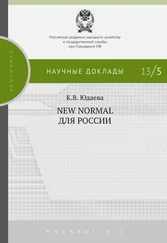It is hard to imagine what social reasons a baby girl might have. It’s harder still to imagine how the odd results, described repeatedly in the videotape as cosmetically pleasing, could be anything other than a source of shame and discomfort. Not only are the results not cosmetically pleasing, they’re not even good. The surgically altered vaginas and reduced clitorises are painful to contemplate (and even more painfully, the vaginas will probably close and require dilation in the course of the patients’ childhood). And according to U.K. research reported in the Lancet , follow-up studies of intersexed children show more sexual and psychological dysfunction among those who have had these pull-through vaginoplasties and clitoral reductions than among those who have had no surgery at all. To watch the surgery is to wonder who in their right mind could think that stripping away and excising nerves protects sexual function or that this surgery is not only preferable but essential and urgent — far more so than helping parents help their child to live with a large clitoris, or with a tiny penis, or even with other, more puzzling anomalies.
Not monsters, nor marvels, nor battering rams for gender theory, people born intersexed have given the rest of the world an opportunity to think more about the odd significance we give to gender, about the elusive nature of truth, about the understandable, sometimes dangerous human yearning for simplicity — and we might, in return, offer them medical care only when they need it, and a little common sense and civilized embrace when they don’t.
Primum non nocere
*In a 1998 article in The Hastings Center Report , Dreger writes, “Most people … assume the phenomenon of intersexuality to be exceedingly rare. It is not. But how common is it? The answer depends, of course, on how one defines it. Broadly speaking, intersexuality constitutes a range of anatomical conditions in which an individual’s anatomy mixes key masculine anatomy with key feminine anatomy. One quickly runs into a problem, however, when trying to define ‘key’ or ‘essential’ feminine and masculine anatomy. In fact, any close study of sexual anatomy results in a loss of faith that there is a simple, ‘natural’ sex distinction that will not break down.… For our purposes, it is simplest to put the question of frequency pragmatically: How often do physicians find themselves unsure which gender to assign at birth? One 1993 gynecology text estimates that ‘in approximately 1 in 500 births, the sex is doubtful because of the external genitalia.’ I am persuaded by more recent, well-documented literature that estimates the number to be roughly 1 in 1,500 live births.” The authors of a peer-reviewed 2000 article in the American Journal of Human Biology write, “We surveyed the medical literature from 1955 to the present for studies of the frequency of deviation from the ideal of male or female. We conclude that this frequency may be as high as 2 % of live births. The frequency of individuals receiving ‘corrective’ genital surgery, however, probably runs between 1 and 2 per 1,000 live births (0.1 to 0.2 %).” The Intersex Society of North America bases its estimate of 1 in 2,000 (which, given about four million births a year, yields an annual total of two thousand births) on “statistics of how many newborn babies are referred to ‘gender identity teams’ in major hospitals.” By any of these reckonings, intersexuality is significantly more common than cystic fibrosis, which has an incidence of 1 in 2,300 live births, according to the Cystic Fibrosis Research website, and affects some forty thousand children and adults in the United States. The number of fellows of the American College of Surgeons fluctuates a bit from year to year but is about fifty thousand.



People who reveal, or announce, that their gender is variegated, rather than monochromatic or plainly colored in the current custom, have always presented difficulties. Not only is our society distressed by masculine women, feminine men, and the androgynous; even the big man who embroiders, or the wife and mother of three who has a black belt in tae kwon do, a buzz cut, and no makeup in her gym bag, stirs a frisson of discomfort. Gender theorists love the gender-nonconforming as examples of all sorts of things, fundamentalists fear and despise them, and whether they avoid our gaze or deliberately seek to disturb, they are the handy punch line for every fading sitcom.
I sometimes think that our culture is like the Church in the days of Galileo. We will not see, and we will silence and mock, even banish and punish, those who say that what is, is. In one well-designed study, only a third of all “normal” women (for the purposes of this particular study, that would be heterosexual women physically and mentally healthy by self-report and clinical observers’ reports) achieved a rating of “classically” feminine. This study described how people actually are — not what they wish to be, not what they imagine themselves to be, but simply how they are — and the results make clear that few of us are what we have nonetheless agreed to believe our gender is. Our cultural standard of gender doesn’t resemble gender as normal people experience it. The knife of normalcy cuts sharp and crazy in our culture, and like most trends and fancies, the craziness is apparent only in retrospect. Today we are appalled or amused by medieval or colonial or Victorian nonsense: surgeries for the sexually healthy woman, to make her less so; boarding school sodomy to make little boys into leaders of men; women forbidden to vote or wear pants or practice law; white men forbidden fear and tears; and black people forbidden most everything. I expect my grandchildren will look back on our ideas about gender and sexuality with much the same disbelief.
It’s hard to dislodge cultural norms and myths when they provide such reassuring bulwarks in the face of such deep anxiety: the vote will make women barren, the sun moves around the earth. People did not conclude that the sun moves around the earth because they were stupid or narrow-minded; they believed it because it seemed reasonable in light of everything they had heard, or even seen, thus far; then it no longer seemed so evident, and by the time people faced that it was not so, the belief itself had come to seem necessary.
A great many people, sick of news from the margins, worn out by the sand shifting beneath their assumptions, like to imagine Nature as a sweet, simple voice: tulips in spring, Vermont’s leaves falling in autumn. There are, of course, occasional mistakes — a leaf that doesn’t fall, a clubfoot; our mistake is in thinking that the wide range of humanity represents aberration when in fact it represents just what it is: range. Nature is not two little notes on a child’s flute; Nature is more like Aretha Franklin: vast, magnificent, capricious — occasionally hilarious — and infinitely varied. The platypus is not a mistake. The sex-changing animals, coral reef fish and Chinook salmon among them, are not mistakes. The cactus and the blue potato are not mistakes. These plants and animals may not be as reassuring a sight as tulips are, but that doesn’t make them deformities.
The hot winters of Australia are not errors. They are just not the cold winters of northern Europe, which typify what winter is, or what it should be, for many Westerners. Surfing at Christmas is not a mistake, not “unnatural,” and certainly not proof of the immutable and fundamental superiority of the white Christmas.
Читать дальше















